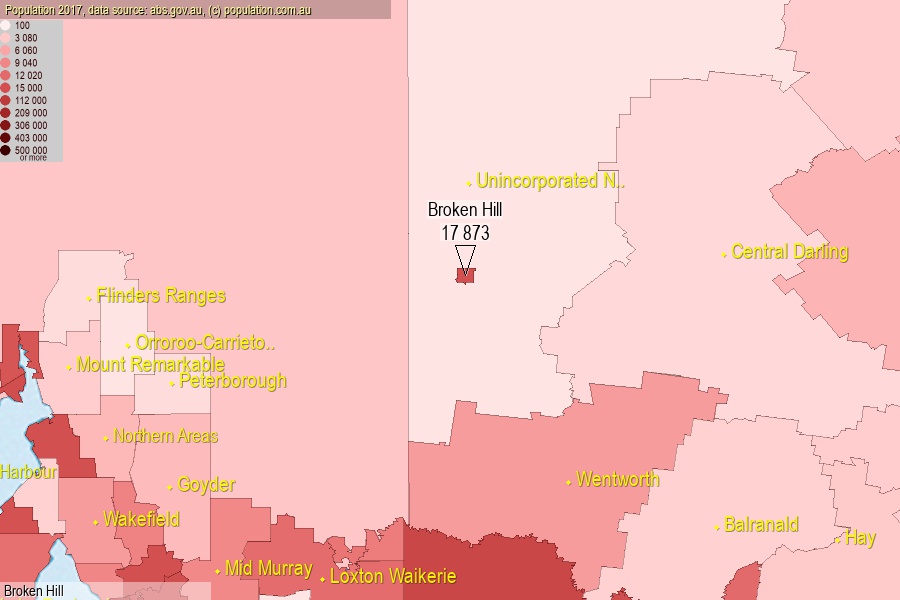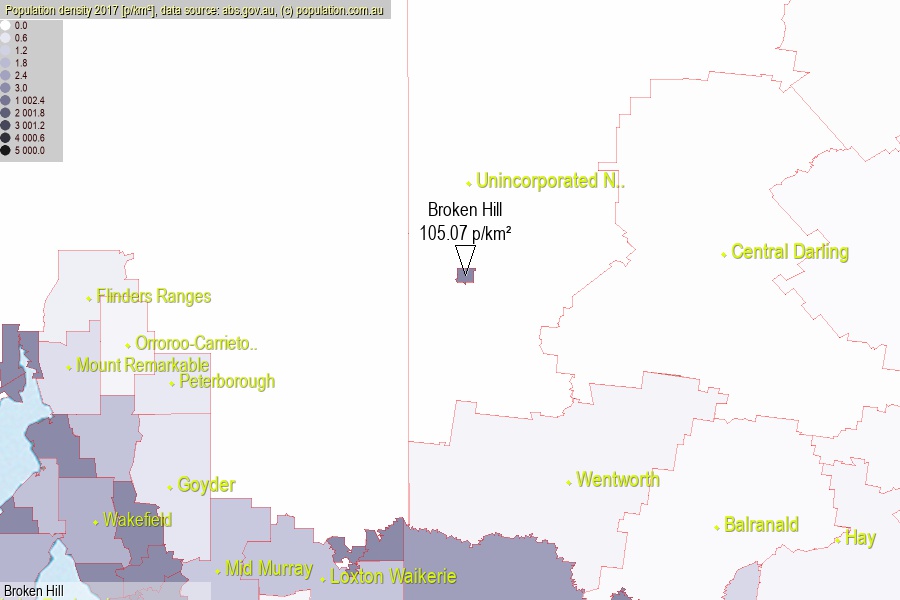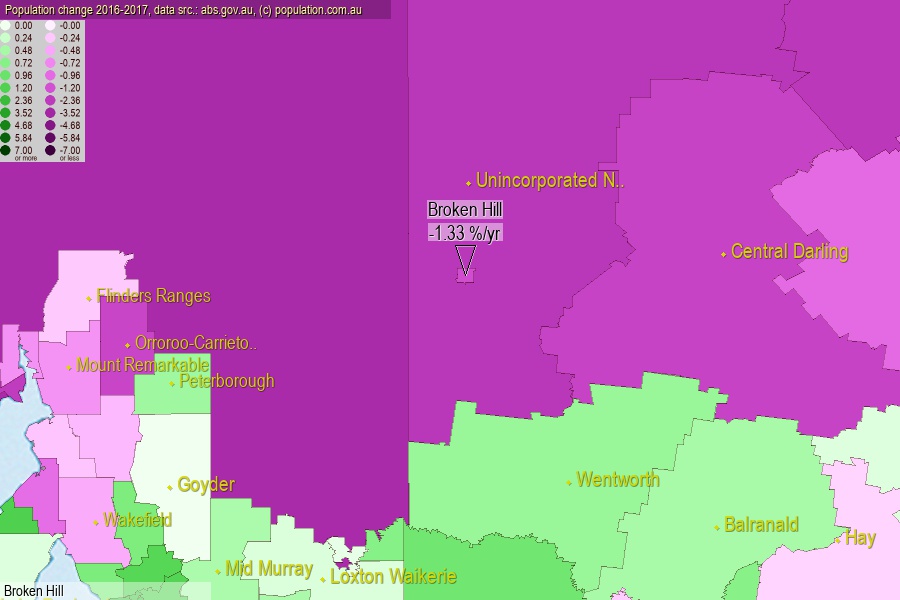 population.com.au
population.com.auLast official estimated population of Broken Hill City (as Local Government Area) was 17 873 people (on 2017-06-30)[2]. This was 0.07% of total Australian population and 0.225% of NSW population. Area of Broken Hill is 170.10 km², in this year population density was 105.07 p/km² . If population growth rate would be same as in period 2016-2017 (-1.33%/yr), Broken Hill population in 2025 would be 16 057. [0]



Click to enlarge. Broken Hill is located in the center of the images.
Population [people], population density [p./km²] and population change [%/year] [2]
[1996-2001] -0.98 %/Y
[2001-2002] -1.18 %/Y
[2002-2003] -1.34 %/Y
[2003-2004] -1.43 %/Y
[2004-2005] -0.97 %/Y
[2005-2006] -0.81 %/Y
[2006-2007] -0.23 %/Y
[2007-2008] -0.53 %/Y
[2008-2009] -0.93 %/Y
[2009-2010] -0.79 %/Y
[2010-2011] -0.60 %/Y
[2011-2012] -0.87 %/Y
[2012-2013] -0.96 %/Y
[2013-2014] -0.93 %/Y
[2014-2015] -1.43 %/Y
[2015-2016] -1.34 %/Y
[2016-2017] -1.33 %/Y
[0] Calculated with linear interpolation from officially estimated population
[1] Read more about LGA and Australian Statistical Geography Standard (ASGS) on abs.gov.au
[2] Population data from Australian Bureau of Statistics (Population and density: 2017; change: 2016-2017)
[3] Digital Boundaries: Australian Statistical Geography Standard (ASGS) 2016.